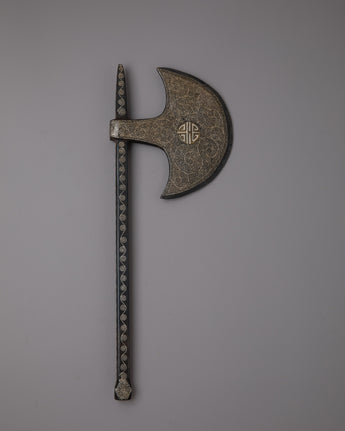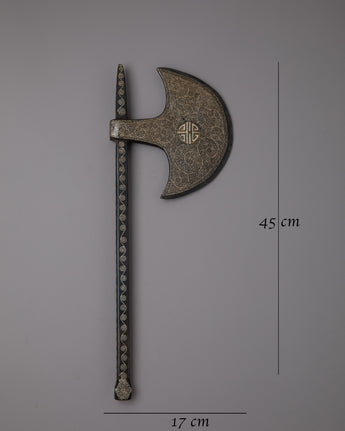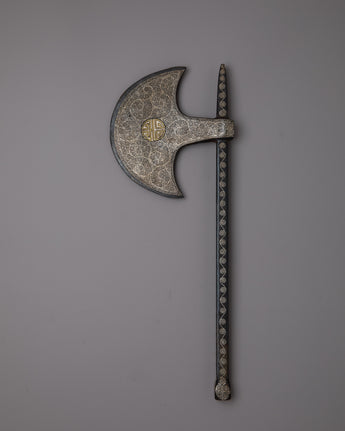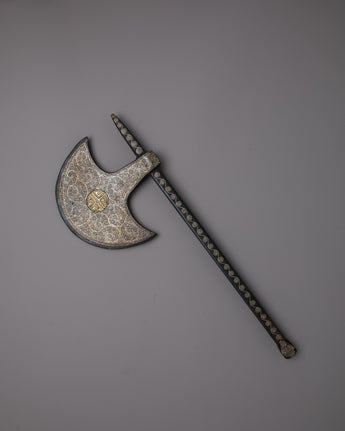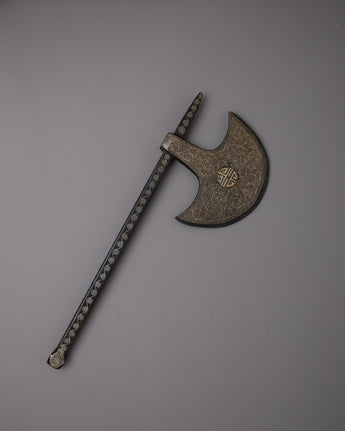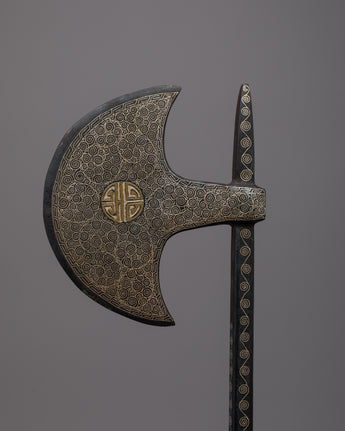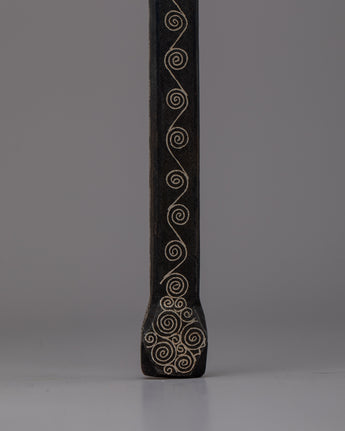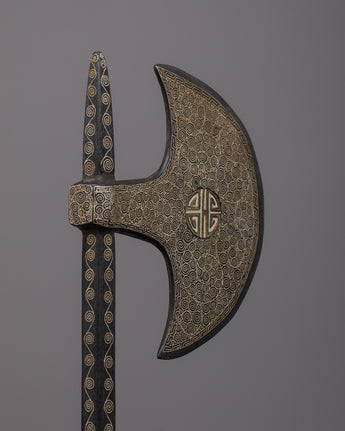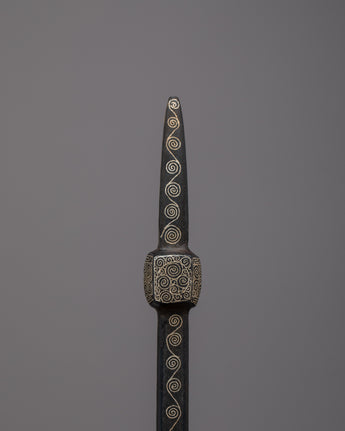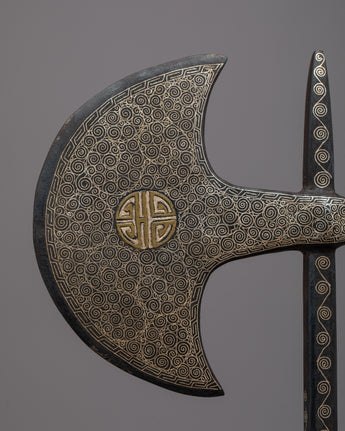
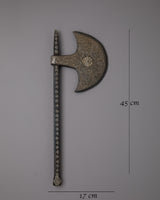
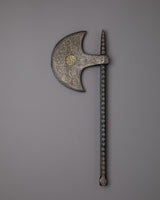
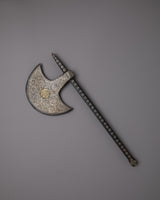
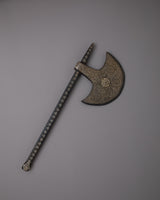

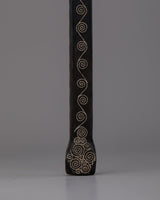
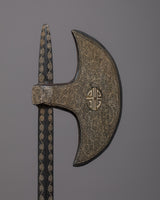

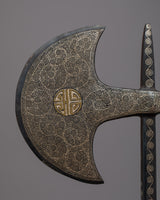
Tibetan Iron Axe | Sacred Tool Symbolizing Strength and Spiritual Protection

100% AUTHENTIC

HANDMADE

FREE SHIPPING
![]() Tibetan Iron Axe
Tibetan Iron Axe
About our product:
Presenting the Tibetan Iron Axe, a finely produced object that reflects the knowledge and historical significance of Tibetan artisans. This impressive axe weighs 1.50 kg and is 45 cm tall by 17 cm wide. It is made of iron with silver inlay. Reflecting the rich traditions and skill of Tibetan metallurgy, the delicate silver inlay work gives a touch of grace and sophistication to the hard iron.
The Tibetan Iron Axe is a useful instrument that also doubles as an eye-catching ornamental item, making it the perfect choice for collectors, art aficionados, and anybody who values distinctive cultural relics. This axe evokes admiration and appreciation for its artistic beauty and historical relevance whether it is shown as a unique piece in any room, utilized as a ritual object, or placed on display in a collection. It is a treasured addition to any collection or ornamental setting because of the way its presence enhances any setting. This axe is more than just a useful tool; it's a significant relic that represents strong cultural beliefs and painstaking craftsmanship.
Introduction to Khatvanga Axe:
The khatvanga, also spelled "khadga" or "khadgaṅka," is a ritual tool used in Tibetan Buddhism and other Vajrayana traditions. It is commonly referred to as a symbolic or ritual axe. The khatvanga is typically made of a long shaft with three severed heads arranged in a triangular pattern at the top. In Buddhism, each head represents the overcoming of the ego as well as the three poisons. The khatvanga is associated with several deities, including Chakrasamvara and Vajrayogini. Practitioners incorporate it into ceremonies and rituals as a spiritual tool for cutting through ignorance and attachment, promoting enlightenment and the realization of emptiness.
------------------------------------------
Size: 45 cm(Height) x 17 cm(Width)
Weight: 1.50 kg
Materials: Iron Body, silver inlaid
------------------------------------------
How to set up your own Buddhist Shrine?
-Find a clean, quiet, and uncluttered spot
-Set up an altar table, and cover it with an altar cloth that calls to you
-Place your sacred item (statue, thangka, or a picture of Buddha) at the center


